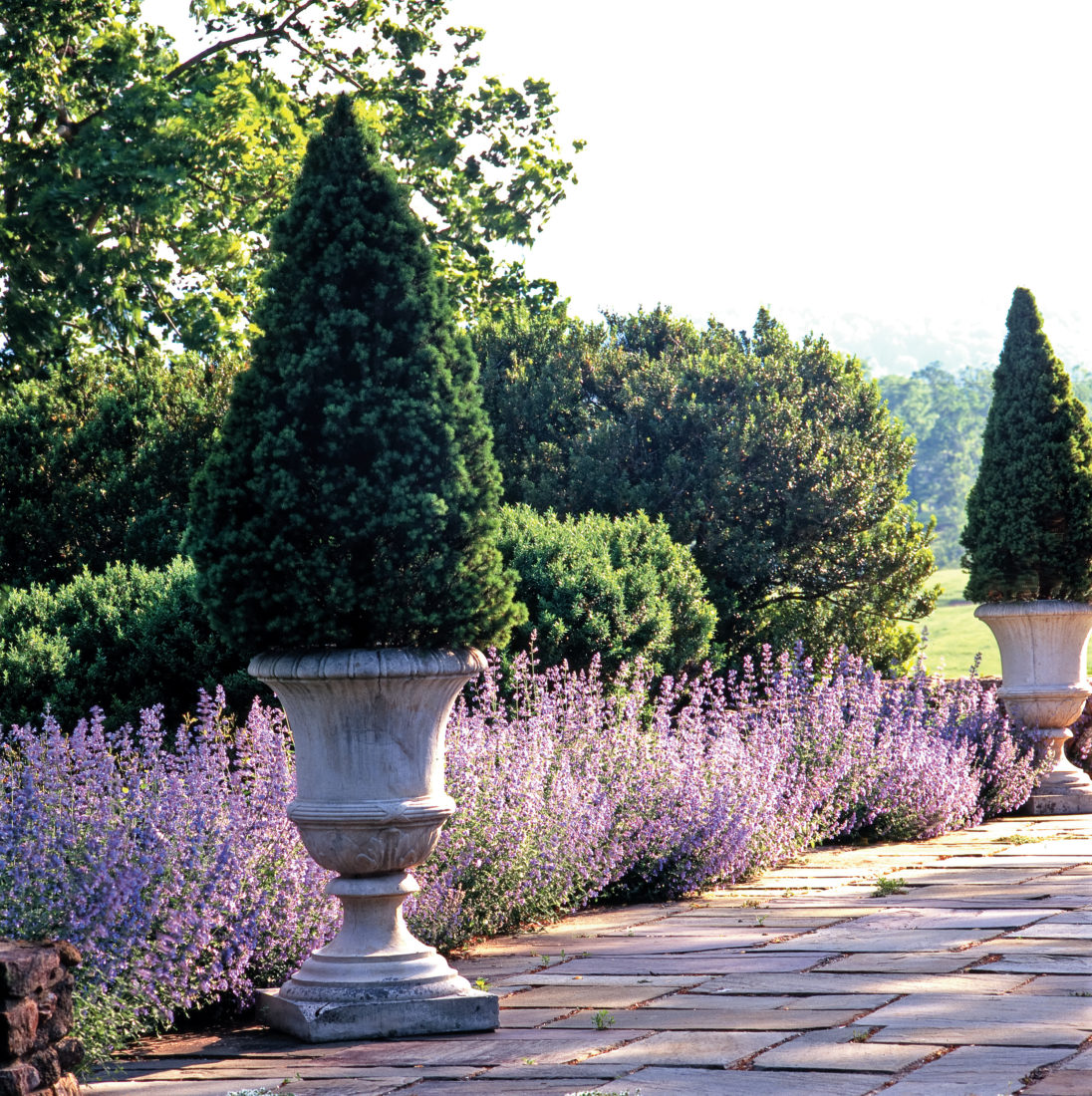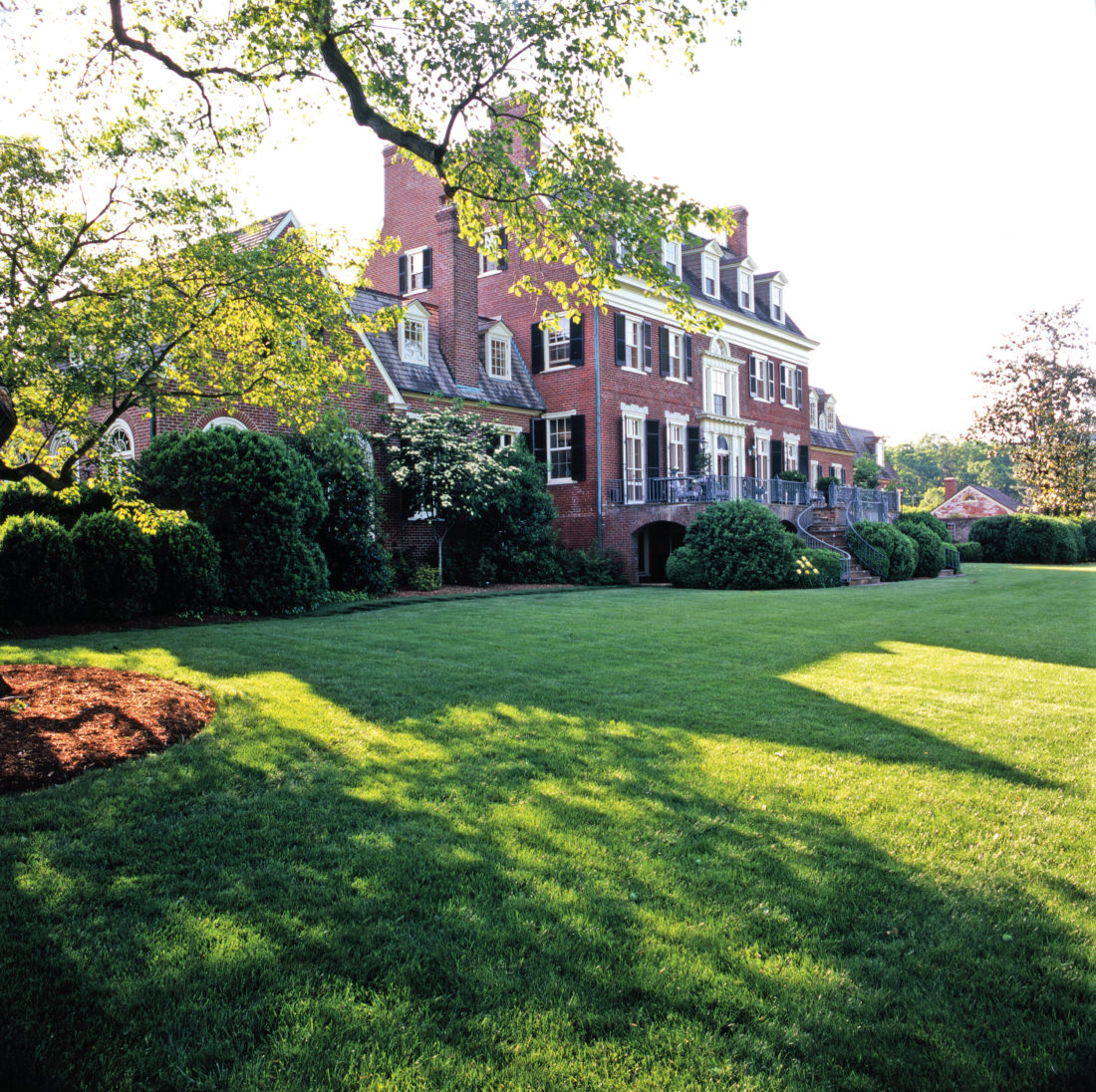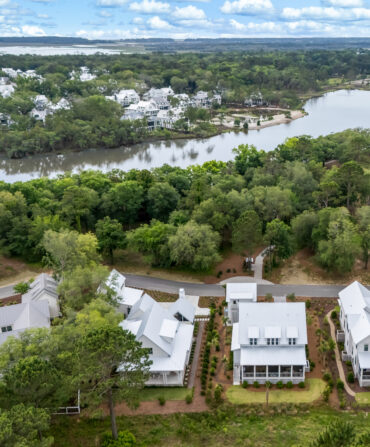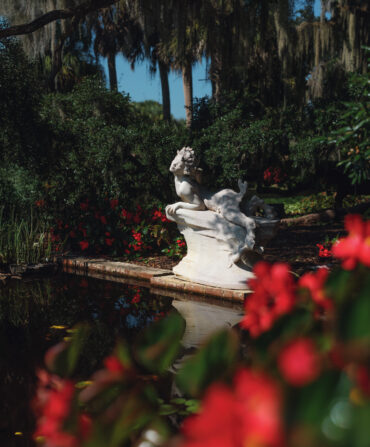A few short years ago, a noted estate garden outside of Charlottesville, Virginia, looked like a run-down city park. Poison ivy infested the boxwood borders. Tree roots buckled the herringbone-patterned brick walkways. The roses and perennials were long gone. But Virginia landscape architect Charles F. Gillette’s plan from the 1920s was still intact. It covered five acres, framed views of the Blue Ridge Mountains, and set off a nineteenth-century Georgian Revival house refined by 1920s society architect William Lawrence Bottomley.

Photo: Richard Felber
Old Garden, New Life
The restored flagstone cocktail terrace
Charles and Kimberlee Cory acquired Blue Ridge Farm in 2002 and learned that this sleeping beauty, one of many famous Bottomley-Gillette collaborations in the state of Virginia, was a rarity because no major construction had altered it. “We had no idea how long restoration would take, but we could see the beautiful bones Gillette laid down and wanted to see everything saved,” Kimberlee says. Charlottesville architect Madison Spencer was assigned the house renovation and led the Corys to landscape architect Rachel Lilly. Lilly was a natural for the job, since she’d worked on Gillette gardens for twenty-five years, following graduate studies at the University of Virginia School of Architecture, where she wrote a thesis on Charles Gillette’s garden design principles.
Photo: Richard Felber
A boxwood niche
1 of 3
Photo: Richard Felber
A specimen rose
2 of 3
Photo: Richard Felber
A brick pathway through the rose garden
3 of 3
“Gillette’s private garden commissions are some of the finest from the twentieth century in America,” Lilly says. Known for park-like landscapes inspired by European country homes, Gillette’s gardens have often garnered national praise, including earning top honors in 1938 from the New York Architectural League.
For Lilly, the first step in uncovering the story of the garden at Blue Ridge Farm was tracking down Gillette’s references to the garden from all manner of sources—from Richmond’s Library of Virginia to the real estate brochures from the sale of the property. They provided some, but not all, of Gillette’s original planting plans. Lilly matched a 1928 plan of a geometric parterre—including a drawing identifying rose varieties—to an overgrown boxwood garden below the open lawn. “We researched the roses to figure out the colors,” she says. “All but two weren’t available, so we substituted floribunda, tea, and heirloom varieties.” Lilly also found and renewed the original cutting garden and combined Gillette’s three renditions of the entrance court into a simplified pathway. While some of the changes were obvious, such as removing a post-Gillette swimming pool, many were as subtle as reiterating brick mortar joints and other details Gillette favored. The attention to detail was worth it. “Saving old gardens from decay isn’t easy, and so many legendary places are now lost,” Lilly says. “I retrieved Gillette’s original plans because I was haunted by the beauty he created in the same way his clients were for more than a half century.”











